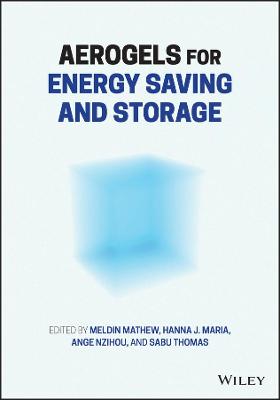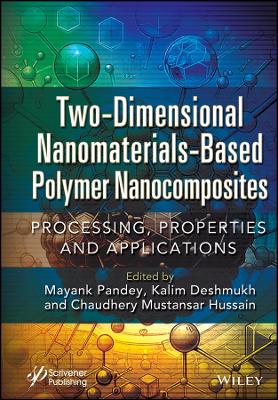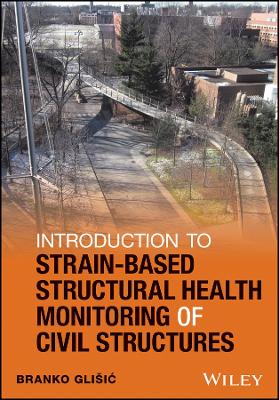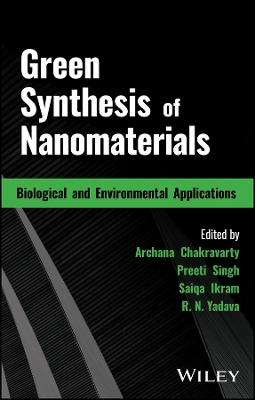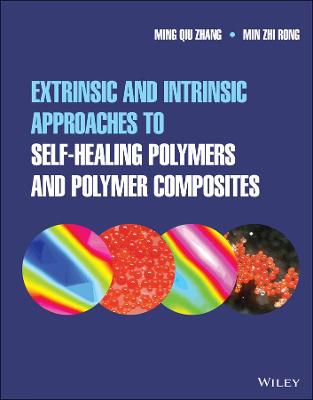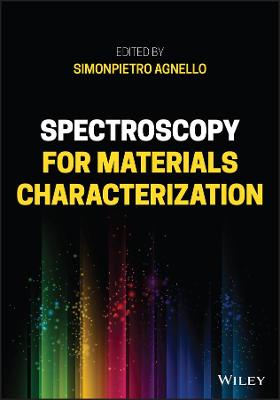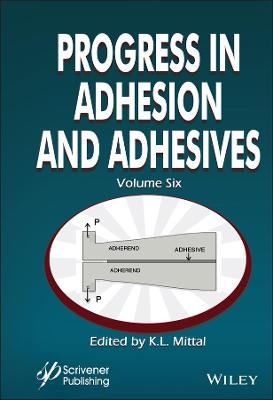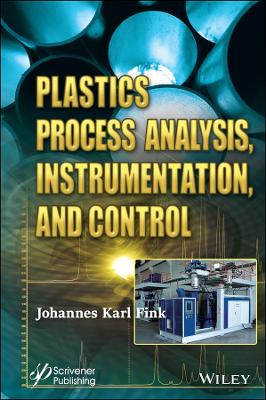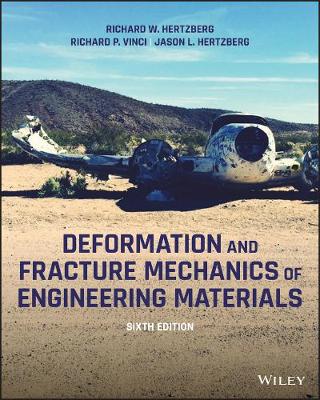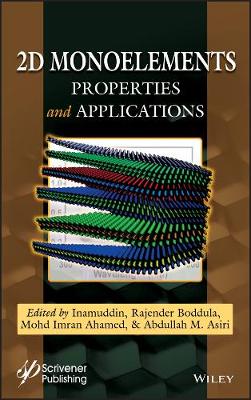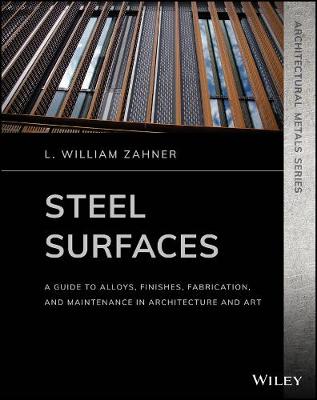Engineering Physics of High-Temperature Materials
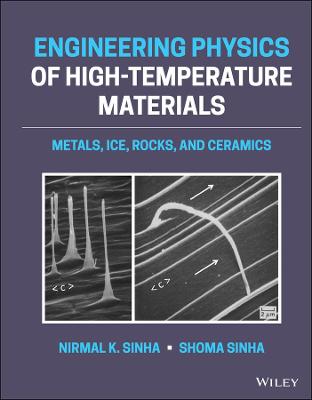 -15%
portes grátis
-15%
portes grátis
Engineering Physics of High-Temperature Materials
Metals, Ice, Rocks, and Ceramics
Sinha, Nirmal K.; Sinha, Shoma
John Wiley & Sons Inc
03/2022
432
Dura
Inglês
9781119420484
15 a 20 dias
1392
Engineering Physics of High-Temperature Materials xv
1 Importance of a Unified Model of High-Temperature Material Behavior 1
1.1 The World's Kitchens - The Innovation Centers for Materials Development 1
1.1.1 Defining High Temperature Based on Cracking Characteristics 4
1.2 Trinities of Earth's Structure and Cryosphere 7
1.2.1 Trinity of Earth's Structure 7
1.2.2 Trinity of Earth's Cryospheric Regions 7
1.3 Earth's Natural Materials (Rocks and Ice) 8
1.3.1 Ice: A High-Temperature Material 9
1.3.2 Ice: An Analog to Understand High-Temperature Properties of Solids 10
1.4 Rationalization of Temperature: Low and High 12
1.5 Deglaciation and Earth's Response 12
1.6 High-Temperature Deformation: Time Dependency 13
1.6.1 Issues with Terminology: Elastic, Plastic, and Viscous Deformation 13
1.6.2 Elastic, Delayed Elastic, and Viscous Deformation 13
1.7 Strength of Materials 16
1.8 Paradigm Shifts 18
1.8.1 Paradigm Shift in Experimental Approach 18
1.8.2 Breaking Tradition for Creep Testing 19
1.8.3 Exemplification the Novel Approach 19
1.8.4 Romanticism for a Constant-Structure Creep Test 23
References 25
2 Nature of Crystalline Substances for Engineering Applications 29
2.1 Basic Materials Classification 30
2.2 Solid-state Materials 31
2.2.1 Structure of Crystalline Solids 31
2.2.2 Structure of Amorphous Solids 33
2.3 General Physical Principles 34
2.3.1 Solidification of Materials 34
2.3.2 Phase Diagrams 35
2.3.3 Crystal Imperfections 37
2.4 Glass and Glassy Phase 40
2.4.1 Glass Transition 40
2.4.2 Structure of Real Glass 41
2.4.3 Composition of Standard Glass 41
2.4.4 Thermal Tempering 42
2.4.5 Material Characteristics 43
2.5 Rocks: The Most Abundant Natural Polycrystalline Material 44
2.5.1 Sedimentary Rocks 44
2.5.2 Metamorphic Rocks 45
2.5.3 Igneous Rocks 45
2.6 Ice: The Second Most Abundant Natural Polycrystalline Material 45
2.7 Ceramics 47
2.8 Metals and Alloys 48
2.8.1 Iron-base Alloys 48
2.8.2 Nickel-base Alloys 50
2.8.3 Titanium-base Alloys 53
2.8.4 Mechanical Metallurgy 54
2.9 Classification of Solids Based on Mechanical Response at High Temperatures 55
References 56
3 Forensic Physical Materialogy 59
3.1 Introduction 59
3.1.1 Material Characterization 60
3.2 Polycrystalline Solids and Crystal Defects 61
3.2.1 Etch-Pitting Technique - A Powerful Tool 63
3.3 Structure and Texture of Natural Hexagonal Ice, Ih 67
3.4 Section Preparation for Microstructural Analysis 69
3.4.1 Thin Sectioning of Ice 69
3.4.2 Large 300mm Diameter Polariscope 69
3.4.3 Sectioning for Forensic Analysis of Compression Failure 70
3.5 Etching of Prepared Section Surfaces 71
3.5.1 Surface Etching 72
3.6 Sublimation Etch Pits in Ice, Ih 72
3.7 Etch-Pitting Technique for Dislocations 75
3.7.1 Simultaneous Etching and Replicating 76
3.7.2 Etching Processes and Their Applications 77
3.8 Chemical Etching and Replicating of Ice Surfaces 79
3.9 Displaying Dislocation Climb by Etching 81
3.10 Thermal Etching: An Unexploited Materialogy Tool 82
References 88
4 Test Techniques and Test Systems 91
4.1 On the Strength of Materials and Test Techniques 91
4.1.1 Issues with Stress-Strain (?-?) Diagrams at High Temperatures 93
4.1.2 Fundamentals of Displacement Rate, Strain Rate, and Stress Rate Tests 95
4.1.3 Time - An Important Parameter at High Temperatures 96
4.2 Static Modulus and Dynamic Elastic Modulus 97
4.3 Thermal Expansion Over a Wide Range of Temperature 97
4.4 Creep and Fracture Strength 98
4.5 Bending Tests 99
4.5.1 Three-Point Bending 99
4.5.2 Four-Point Bending 99
4.5.3 Cantilever Beam Bending 102
4.6 Compression Tests - Uniaxial, Biaxial, and Triaxial 103
4.6.1 Uniaxial Compression Tests 103
4.6.2 Biaxial or Confined Compression Tests 103
4.6.3 Triaxial or Multiaxial Compression and Tension Tests 103
4.7 Tensile and/or Compression Test System 104
4.7.1 Tests with Single Top-Lever Loading Frame 104
4.7.2 Universal Testing Machine and Systems: Introduction to SRRT Methodology 105
4.8 Stress Relaxation Tests (SRTs) 107
4.8.1 Necessity for Stress Relaxation Properties 108
4.8.2 Basic Principle of SRTs 109
4.9 Cyclic Fatigue 110
4.9.1 Low-Cycle Fatigue (LCF) and High-Cycle Fatigue (HCF Tests) 110
4.9.2 Uncharted Characteristics of Delayed Elasticity in Cyclic Loading 112
4.9.3 Cyclic Loading of Snow and Thermal Cycling on Asphalt Concrete 113
4.10 Acoustic Emission (AE) and/or Microseismic Activity (MA) 114
4.11 Tempering of Structural and Automotive Glasses 116
4.12 Specimen Size and Geometry: Depending on Material Grain Structure 119
4.13 In Situ Borehole Tests: Inspirations from Rock Mechanics 119
References 123
5 Creep Fundamentals 129
5.1 Overview 130
5.2 On Rheology and Rheological Terminology 132
5.3 Forms of Creep and Deformation Maps 132
5.3.1 Generalization for Polycrystalline Materials 132
5.3.2 Nabarro-Herring Creep 133
5.3.3 Coble Creep 133
5.3.4 Harper-Dorn Creep 133
5.3.5 Ashby-Verrall Creep 133
5.3.6 Deformation Mechanism Maps 134
5.4 Grain-Boundary Shearing or Sliding 134
5.5 Creep Curves - Classical Primary, Secondary, and Tertiary Descriptions 135
5.5.1 Elasticity and Annealing of Glass 136
5.5.2 Phenomenological Rheology of Glass 137
5.5.3 Normalized Creep - Another Presentation of Rheology of Glass 140
5.6 Phenomenology of Primary Creep in Metals, Ceramics, and Rocks 144
5.7 Primary Creep in Ice: Launching SRRT Technique and EDEV Model 148
5.8 Grain-Boundary Shearing (gbs) and Grain-Size Dependent Delayed Elasticity 151
5.9 Generalization of EDEV Model: Introduction of Grain-Size Effect 153
5.10 Logarithmic Primary Creep: An Alternative Form of the EDEV Model 157
5.11 Shifting Paradigms: Emphasizing Primary Creep of Polycrystalline Materials 158
5.12 SRRT for Primary Creep and EDEV Model of a Titanium-Base Superalloy (Ti-6246) 158
5.13 SRRT for Primary Creep and EDEV Model for a Nickel-Base Superalloy (Waspaloy) 162
5.14 SRRT for Primary Creep of a Nickel-Rich Iron-Base Alloy (Discaloy) 169
5.15 SRRTs for Primary Creep and EDEV Model of a Nickel-Base Superalloy (IN-738LC) 170
5.16 EDEV-Based Strain-Rate Sensitivity of High-Temperature Yield Strength 175
5.16.1 Constant Strain-Rate Yield 176
5.16.2 Yield Strength of Ti-6246 at 873 K (0.45 Tm) 178
5.16.3 Yield Strength of Waspaloy at 1005 K (0.62 Tm) 178
5.17 Single-Crystal (SX) Superalloy Delayed Elasticity and ?/? Interface Shearing 185
5.18 Creep, Steady-State Tertiary Stage, and Elasto-Viscous (EV) Model for Single Crystals 191
5.19 Creep Fracture and EV Model for CMSX-10 SXs 194
5.20 Fracture and Inhomogeneous Deformation 198
5.21 Dynamic Steady-State Tertiary Creep of Several Nickel-Base SXs 200
5.21.1 MAR-M-247 Single Crystal 200
5.21.2 CMSX-3 Single Crystal 201
5.21.3 CMSX-4 Single Crystal with Rhenium 202
5.21.4 CMSX-4 Single Crystal 202
5.21.5 TMS-75 Single Crystal 203
5.21.6 SRR99 Single Crystal 205
References 205
6 Phenomenological Creep Failure Models 215
6.1 Creep and Creep Failure 215
6.2 Steady-State Creep 216
6.3 Commonly Used Creep Experiments and Strength Tests 217
6.3.1 Constant Stress and Constant Deformation (CD) Rate Tests 217
6.3.2 A Short Glimpse of Creep Tests 220
6.3.3 Power Law for Creep 220
6.3.4 Larsen and Miller Concept 223
6.3.5 Monkman and Grant (M-G) Relationship 223
6.3.6 Rabotnov-Kachanov Concept for Creep Fracture 224
6.3.7 Breaking Tradition - ?-Projection Concept 224
6.4 Modeling Very Long-Term Creep Rupture from Short-Term Tests 225
6.4.1 Traditional Approaches for Power-Generation Operations 225
6.4.2 Captivating and Entrenched Focus on Minimum Creep Rate 226
6.5 High-Temperature Low-Cycle Fatigue (HT-LCF) and Dwell Fatigue 226
6.6 Crucial Tests on Rate Sensitivity of High-Temperature Strength 227
6.7 Rational Approach Inspired by the Principle of "Hindsight 20/20" 232
References 233
7 High-Temperature Grain-Boundary Embrittlement and Creep 237
7.1 Fracture and Material Failure 237
7.1.1 Griffith's Model for Crack Propagation 239
7.1.2 Crack Nucleation Mechanisms at Low Homologous Temperatures 240
7.1.3 Acoustic Emissions and Cracks 241
7.1.4 A Novel Treatment of AE and Cracks in Ice Engineering 242
7.2 Grain Size Effects on Strength 245
7.2.1 Popular Low-Temperature Concept of Strength 245
7.2.2 Problems with Estimating Grain Size 245
7.2.3 Inapplicability of the Hall-Petch Relation at High Temperatures 246
7.3 Grain-Boundary Shearing (gbs) Induced Crack Initiation 246
7.3.1 Groundwork for a High-Temperature Crack-Initiation Hypothesis 248
7.3.2 Gold's Classic Studies on Creep Cracking by Visual Observations 249
7.3.3 Forensic Microstructural Examinations of First Creep Cracks 251
7.3.4 First Grain-Facet-Sized Cracks and Critical Delayed Elastic Criterion 252
7.3.5 Critical Time and Stress for Onset of Creep Fracture 254
7.3.6 Critical Strain for First Cracks (or Fracture Failure) 255
7.3.7 Apparent Activation Energy for First Cracks and Fracture 257
7.3.8 Kinetics of Creep Cracking 258
References 260
8 Microstructure and Crack-Enhanced Elasto - Delayed-Elastic - Viscous Models 265
8.1 Physics-Based Holistic Model Approach 265
8.1.1 On Transient Creep and the Shape of Creep Curves 266
8.1.2 On "Limiting Transient Creep Strain" (?T) 267
8.1.3 On the Traditions of Creep Testing and Shifting Paradigms 268
8.2 Kinetics of Microcracking and Structural Damage 271
8.3 Microcrack-Enhanced EDEV Model 271
8.4 EDEV-Based Algorithm for Constant Strain Rate, Encompassing Cracking 273
8.4.1 EDEV-Based Stress-Strain Diagrams 275
8.5 Constant Stress, Crack-Enhanced Creep: EDEV Predictions 279
8.5.1 Apparent Brittle-Ductile Transition in Constant Stress Creep 281
8.5.2 Power-Law Breakdown for Minimum Creep Rate 283
8.5.3 Grain-Size Effects on Creep with Crack Formation 284
8.5.4 Creep Dilatation in Polycrystalline Columnar-Grained and Equiaxed Solids 287
8.5.5 Crack Damage at Minimum Creep Rate and Upper Yield 291
8.5.6 Strain-Rate Sensitivity of Initial Deformation, Dilatancy, and Residual Strength 293
8.6 Cyclic Fatigue 293
8.6.1 Low-Cycle Constant Strain Rate Loading 294
8.6.2 Low-Cycle, High-Strain Fatigue: Repeated Constant Load 295
8.7 Crack Healing or Closure of w-Type Voids Generating r-Type Cavities 295
References 298
9 Stress Relaxation at High Temperatures 303
9.1 The Role of Stress Relaxation Tests at High Temperatures 303
9.1.1 Traditional SRTs 304
9.1.2 Phenomenology of Stress Relaxation 306
9.1.3 Capabilities and Inadequacies of SRT for Creep Estimation 308
9.1.4 Rationalization of SRT Processes 309
9.1.5 SRT on Coarse-Grained Materials 310
9.1.6 New Approaches for Examining Applicability of SRT for Fine-Grained Materials 313
9.1.7 Grain-Size-Based Optimization of Initial Strain, ?0, for SRT 317
9.2 Constitutive Equations without Effect of Grain Size 318
9.2.1 Constitutive Equation for Uniaxial Creep at High Temperatures 318
9.2.2 SR Based on Constitutive Equation 321
9.2.3 Type-A Engineering Prediction for SRT 321
9.3 Temperature and Grain-Size Effects on SR 327
9.3.1 EDEV Constitutive Equation Incorporating Grain Size and Temperature 327
9.3.2 EDEV-Based SRT Algorithm for Grain-Size and Temperature Dependency 328
9.3.3 Lack of Grain-Size-Dependent Data on Primary Creep of Engineering Materials 328
9.4 Forecasting Grain-Size Effects on SR in Pure Ice Based on EDEV Equation 328
9.4.1 Basis of Calculation for Ice 329
9.4.2 Effect of Strain, ?0 (Constant Temperature and Grain Size) 329
9.4.3 Effect of Temperature (Constant Strain and Grain Size) 331
9.4.4 Effect of Grain Size (Constant Strain and Temperature) 331
9.4.5 Strain (?0) Dependence of Strain Components (Constant Temperature and Grain Size) 332
9.4.6 Grain-Size Effect on Strain Components During SRT (Constant Strain and Temperature) 332
9.4.7 Comments on SRTs Related to Ice and Field Experience 332
9.5 High-Temperature Forming, Delayed Spring-Back, and Grain-Size Effects on SR in Metals 335
References 339
10 Ice Age and Intraglacial Depression and Postglacial Rebound of Earth's Crust 343
10.1 Tectonic Plates, Lake Ice, and High-Temperature Materials: What Is the Connection? 343
10.2 On Glaciers and Oceanic Ice Cover: Past and Present 345
10.2.1 Rise of Canada - Postglacial Uplift 346
10.2.2 Postglacial Adjustments of North America's Landscape 346
10.3 Dow's Lake Studies 347
10.3.1 Dow's Lake Ice Sheet: Crowd Load/Unload During Winter of 1985 347
10.3.2 Swimming Pool Loading Experiment on Dow's Lake Ice in 1986 351
10.4 Elasto - Delayed-Elastic (EDE) Theory for Plates 356
References 362
11 Plate Tectonics and Polar Sea Ice 365
11.1 Retrospective Introduction 365
11.2 Earth and Plate Tectonics 368
11.2.1 On Sea Ice: Analog for Tectonic Plates 369
11.2.2 Trinity of Tectonic Plates 371
11.2.3 Trinity of Tectonic Plate Boundaries 371
11.3 Scale of Observations 372
11.3.1 Messengers of Earth Below and Sky Above 376
11.4 Vertical Temperature Profiles of Earth and Ice Sheet 378
11.5 Time-Temperature Shift Function 381
11.6 Nonlinear, Grain-Size-Dependent Delayed Elasticity (Anelasticity) of Mantle 382
11.7 Stress Field of Earth's Crust 385
11.8 Koyna and Warna Dams in India and Reservoir-Triggered Seismicity (RTS) 386
11.9 Movement of Tectonic Plates, Indentation, and Fracture 391
11.10 Looking Forward 394
References 395
Index 401
Engineering Physics of High-Temperature Materials xv
1 Importance of a Unified Model of High-Temperature Material Behavior 1
1.1 The World's Kitchens - The Innovation Centers for Materials Development 1
1.1.1 Defining High Temperature Based on Cracking Characteristics 4
1.2 Trinities of Earth's Structure and Cryosphere 7
1.2.1 Trinity of Earth's Structure 7
1.2.2 Trinity of Earth's Cryospheric Regions 7
1.3 Earth's Natural Materials (Rocks and Ice) 8
1.3.1 Ice: A High-Temperature Material 9
1.3.2 Ice: An Analog to Understand High-Temperature Properties of Solids 10
1.4 Rationalization of Temperature: Low and High 12
1.5 Deglaciation and Earth's Response 12
1.6 High-Temperature Deformation: Time Dependency 13
1.6.1 Issues with Terminology: Elastic, Plastic, and Viscous Deformation 13
1.6.2 Elastic, Delayed Elastic, and Viscous Deformation 13
1.7 Strength of Materials 16
1.8 Paradigm Shifts 18
1.8.1 Paradigm Shift in Experimental Approach 18
1.8.2 Breaking Tradition for Creep Testing 19
1.8.3 Exemplification the Novel Approach 19
1.8.4 Romanticism for a Constant-Structure Creep Test 23
References 25
2 Nature of Crystalline Substances for Engineering Applications 29
2.1 Basic Materials Classification 30
2.2 Solid-state Materials 31
2.2.1 Structure of Crystalline Solids 31
2.2.2 Structure of Amorphous Solids 33
2.3 General Physical Principles 34
2.3.1 Solidification of Materials 34
2.3.2 Phase Diagrams 35
2.3.3 Crystal Imperfections 37
2.4 Glass and Glassy Phase 40
2.4.1 Glass Transition 40
2.4.2 Structure of Real Glass 41
2.4.3 Composition of Standard Glass 41
2.4.4 Thermal Tempering 42
2.4.5 Material Characteristics 43
2.5 Rocks: The Most Abundant Natural Polycrystalline Material 44
2.5.1 Sedimentary Rocks 44
2.5.2 Metamorphic Rocks 45
2.5.3 Igneous Rocks 45
2.6 Ice: The Second Most Abundant Natural Polycrystalline Material 45
2.7 Ceramics 47
2.8 Metals and Alloys 48
2.8.1 Iron-base Alloys 48
2.8.2 Nickel-base Alloys 50
2.8.3 Titanium-base Alloys 53
2.8.4 Mechanical Metallurgy 54
2.9 Classification of Solids Based on Mechanical Response at High Temperatures 55
References 56
3 Forensic Physical Materialogy 59
3.1 Introduction 59
3.1.1 Material Characterization 60
3.2 Polycrystalline Solids and Crystal Defects 61
3.2.1 Etch-Pitting Technique - A Powerful Tool 63
3.3 Structure and Texture of Natural Hexagonal Ice, Ih 67
3.4 Section Preparation for Microstructural Analysis 69
3.4.1 Thin Sectioning of Ice 69
3.4.2 Large 300mm Diameter Polariscope 69
3.4.3 Sectioning for Forensic Analysis of Compression Failure 70
3.5 Etching of Prepared Section Surfaces 71
3.5.1 Surface Etching 72
3.6 Sublimation Etch Pits in Ice, Ih 72
3.7 Etch-Pitting Technique for Dislocations 75
3.7.1 Simultaneous Etching and Replicating 76
3.7.2 Etching Processes and Their Applications 77
3.8 Chemical Etching and Replicating of Ice Surfaces 79
3.9 Displaying Dislocation Climb by Etching 81
3.10 Thermal Etching: An Unexploited Materialogy Tool 82
References 88
4 Test Techniques and Test Systems 91
4.1 On the Strength of Materials and Test Techniques 91
4.1.1 Issues with Stress-Strain (?-?) Diagrams at High Temperatures 93
4.1.2 Fundamentals of Displacement Rate, Strain Rate, and Stress Rate Tests 95
4.1.3 Time - An Important Parameter at High Temperatures 96
4.2 Static Modulus and Dynamic Elastic Modulus 97
4.3 Thermal Expansion Over a Wide Range of Temperature 97
4.4 Creep and Fracture Strength 98
4.5 Bending Tests 99
4.5.1 Three-Point Bending 99
4.5.2 Four-Point Bending 99
4.5.3 Cantilever Beam Bending 102
4.6 Compression Tests - Uniaxial, Biaxial, and Triaxial 103
4.6.1 Uniaxial Compression Tests 103
4.6.2 Biaxial or Confined Compression Tests 103
4.6.3 Triaxial or Multiaxial Compression and Tension Tests 103
4.7 Tensile and/or Compression Test System 104
4.7.1 Tests with Single Top-Lever Loading Frame 104
4.7.2 Universal Testing Machine and Systems: Introduction to SRRT Methodology 105
4.8 Stress Relaxation Tests (SRTs) 107
4.8.1 Necessity for Stress Relaxation Properties 108
4.8.2 Basic Principle of SRTs 109
4.9 Cyclic Fatigue 110
4.9.1 Low-Cycle Fatigue (LCF) and High-Cycle Fatigue (HCF Tests) 110
4.9.2 Uncharted Characteristics of Delayed Elasticity in Cyclic Loading 112
4.9.3 Cyclic Loading of Snow and Thermal Cycling on Asphalt Concrete 113
4.10 Acoustic Emission (AE) and/or Microseismic Activity (MA) 114
4.11 Tempering of Structural and Automotive Glasses 116
4.12 Specimen Size and Geometry: Depending on Material Grain Structure 119
4.13 In Situ Borehole Tests: Inspirations from Rock Mechanics 119
References 123
5 Creep Fundamentals 129
5.1 Overview 130
5.2 On Rheology and Rheological Terminology 132
5.3 Forms of Creep and Deformation Maps 132
5.3.1 Generalization for Polycrystalline Materials 132
5.3.2 Nabarro-Herring Creep 133
5.3.3 Coble Creep 133
5.3.4 Harper-Dorn Creep 133
5.3.5 Ashby-Verrall Creep 133
5.3.6 Deformation Mechanism Maps 134
5.4 Grain-Boundary Shearing or Sliding 134
5.5 Creep Curves - Classical Primary, Secondary, and Tertiary Descriptions 135
5.5.1 Elasticity and Annealing of Glass 136
5.5.2 Phenomenological Rheology of Glass 137
5.5.3 Normalized Creep - Another Presentation of Rheology of Glass 140
5.6 Phenomenology of Primary Creep in Metals, Ceramics, and Rocks 144
5.7 Primary Creep in Ice: Launching SRRT Technique and EDEV Model 148
5.8 Grain-Boundary Shearing (gbs) and Grain-Size Dependent Delayed Elasticity 151
5.9 Generalization of EDEV Model: Introduction of Grain-Size Effect 153
5.10 Logarithmic Primary Creep: An Alternative Form of the EDEV Model 157
5.11 Shifting Paradigms: Emphasizing Primary Creep of Polycrystalline Materials 158
5.12 SRRT for Primary Creep and EDEV Model of a Titanium-Base Superalloy (Ti-6246) 158
5.13 SRRT for Primary Creep and EDEV Model for a Nickel-Base Superalloy (Waspaloy) 162
5.14 SRRT for Primary Creep of a Nickel-Rich Iron-Base Alloy (Discaloy) 169
5.15 SRRTs for Primary Creep and EDEV Model of a Nickel-Base Superalloy (IN-738LC) 170
5.16 EDEV-Based Strain-Rate Sensitivity of High-Temperature Yield Strength 175
5.16.1 Constant Strain-Rate Yield 176
5.16.2 Yield Strength of Ti-6246 at 873 K (0.45 Tm) 178
5.16.3 Yield Strength of Waspaloy at 1005 K (0.62 Tm) 178
5.17 Single-Crystal (SX) Superalloy Delayed Elasticity and ?/? Interface Shearing 185
5.18 Creep, Steady-State Tertiary Stage, and Elasto-Viscous (EV) Model for Single Crystals 191
5.19 Creep Fracture and EV Model for CMSX-10 SXs 194
5.20 Fracture and Inhomogeneous Deformation 198
5.21 Dynamic Steady-State Tertiary Creep of Several Nickel-Base SXs 200
5.21.1 MAR-M-247 Single Crystal 200
5.21.2 CMSX-3 Single Crystal 201
5.21.3 CMSX-4 Single Crystal with Rhenium 202
5.21.4 CMSX-4 Single Crystal 202
5.21.5 TMS-75 Single Crystal 203
5.21.6 SRR99 Single Crystal 205
References 205
6 Phenomenological Creep Failure Models 215
6.1 Creep and Creep Failure 215
6.2 Steady-State Creep 216
6.3 Commonly Used Creep Experiments and Strength Tests 217
6.3.1 Constant Stress and Constant Deformation (CD) Rate Tests 217
6.3.2 A Short Glimpse of Creep Tests 220
6.3.3 Power Law for Creep 220
6.3.4 Larsen and Miller Concept 223
6.3.5 Monkman and Grant (M-G) Relationship 223
6.3.6 Rabotnov-Kachanov Concept for Creep Fracture 224
6.3.7 Breaking Tradition - ?-Projection Concept 224
6.4 Modeling Very Long-Term Creep Rupture from Short-Term Tests 225
6.4.1 Traditional Approaches for Power-Generation Operations 225
6.4.2 Captivating and Entrenched Focus on Minimum Creep Rate 226
6.5 High-Temperature Low-Cycle Fatigue (HT-LCF) and Dwell Fatigue 226
6.6 Crucial Tests on Rate Sensitivity of High-Temperature Strength 227
6.7 Rational Approach Inspired by the Principle of "Hindsight 20/20" 232
References 233
7 High-Temperature Grain-Boundary Embrittlement and Creep 237
7.1 Fracture and Material Failure 237
7.1.1 Griffith's Model for Crack Propagation 239
7.1.2 Crack Nucleation Mechanisms at Low Homologous Temperatures 240
7.1.3 Acoustic Emissions and Cracks 241
7.1.4 A Novel Treatment of AE and Cracks in Ice Engineering 242
7.2 Grain Size Effects on Strength 245
7.2.1 Popular Low-Temperature Concept of Strength 245
7.2.2 Problems with Estimating Grain Size 245
7.2.3 Inapplicability of the Hall-Petch Relation at High Temperatures 246
7.3 Grain-Boundary Shearing (gbs) Induced Crack Initiation 246
7.3.1 Groundwork for a High-Temperature Crack-Initiation Hypothesis 248
7.3.2 Gold's Classic Studies on Creep Cracking by Visual Observations 249
7.3.3 Forensic Microstructural Examinations of First Creep Cracks 251
7.3.4 First Grain-Facet-Sized Cracks and Critical Delayed Elastic Criterion 252
7.3.5 Critical Time and Stress for Onset of Creep Fracture 254
7.3.6 Critical Strain for First Cracks (or Fracture Failure) 255
7.3.7 Apparent Activation Energy for First Cracks and Fracture 257
7.3.8 Kinetics of Creep Cracking 258
References 260
8 Microstructure and Crack-Enhanced Elasto - Delayed-Elastic - Viscous Models 265
8.1 Physics-Based Holistic Model Approach 265
8.1.1 On Transient Creep and the Shape of Creep Curves 266
8.1.2 On "Limiting Transient Creep Strain" (?T) 267
8.1.3 On the Traditions of Creep Testing and Shifting Paradigms 268
8.2 Kinetics of Microcracking and Structural Damage 271
8.3 Microcrack-Enhanced EDEV Model 271
8.4 EDEV-Based Algorithm for Constant Strain Rate, Encompassing Cracking 273
8.4.1 EDEV-Based Stress-Strain Diagrams 275
8.5 Constant Stress, Crack-Enhanced Creep: EDEV Predictions 279
8.5.1 Apparent Brittle-Ductile Transition in Constant Stress Creep 281
8.5.2 Power-Law Breakdown for Minimum Creep Rate 283
8.5.3 Grain-Size Effects on Creep with Crack Formation 284
8.5.4 Creep Dilatation in Polycrystalline Columnar-Grained and Equiaxed Solids 287
8.5.5 Crack Damage at Minimum Creep Rate and Upper Yield 291
8.5.6 Strain-Rate Sensitivity of Initial Deformation, Dilatancy, and Residual Strength 293
8.6 Cyclic Fatigue 293
8.6.1 Low-Cycle Constant Strain Rate Loading 294
8.6.2 Low-Cycle, High-Strain Fatigue: Repeated Constant Load 295
8.7 Crack Healing or Closure of w-Type Voids Generating r-Type Cavities 295
References 298
9 Stress Relaxation at High Temperatures 303
9.1 The Role of Stress Relaxation Tests at High Temperatures 303
9.1.1 Traditional SRTs 304
9.1.2 Phenomenology of Stress Relaxation 306
9.1.3 Capabilities and Inadequacies of SRT for Creep Estimation 308
9.1.4 Rationalization of SRT Processes 309
9.1.5 SRT on Coarse-Grained Materials 310
9.1.6 New Approaches for Examining Applicability of SRT for Fine-Grained Materials 313
9.1.7 Grain-Size-Based Optimization of Initial Strain, ?0, for SRT 317
9.2 Constitutive Equations without Effect of Grain Size 318
9.2.1 Constitutive Equation for Uniaxial Creep at High Temperatures 318
9.2.2 SR Based on Constitutive Equation 321
9.2.3 Type-A Engineering Prediction for SRT 321
9.3 Temperature and Grain-Size Effects on SR 327
9.3.1 EDEV Constitutive Equation Incorporating Grain Size and Temperature 327
9.3.2 EDEV-Based SRT Algorithm for Grain-Size and Temperature Dependency 328
9.3.3 Lack of Grain-Size-Dependent Data on Primary Creep of Engineering Materials 328
9.4 Forecasting Grain-Size Effects on SR in Pure Ice Based on EDEV Equation 328
9.4.1 Basis of Calculation for Ice 329
9.4.2 Effect of Strain, ?0 (Constant Temperature and Grain Size) 329
9.4.3 Effect of Temperature (Constant Strain and Grain Size) 331
9.4.4 Effect of Grain Size (Constant Strain and Temperature) 331
9.4.5 Strain (?0) Dependence of Strain Components (Constant Temperature and Grain Size) 332
9.4.6 Grain-Size Effect on Strain Components During SRT (Constant Strain and Temperature) 332
9.4.7 Comments on SRTs Related to Ice and Field Experience 332
9.5 High-Temperature Forming, Delayed Spring-Back, and Grain-Size Effects on SR in Metals 335
References 339
10 Ice Age and Intraglacial Depression and Postglacial Rebound of Earth's Crust 343
10.1 Tectonic Plates, Lake Ice, and High-Temperature Materials: What Is the Connection? 343
10.2 On Glaciers and Oceanic Ice Cover: Past and Present 345
10.2.1 Rise of Canada - Postglacial Uplift 346
10.2.2 Postglacial Adjustments of North America's Landscape 346
10.3 Dow's Lake Studies 347
10.3.1 Dow's Lake Ice Sheet: Crowd Load/Unload During Winter of 1985 347
10.3.2 Swimming Pool Loading Experiment on Dow's Lake Ice in 1986 351
10.4 Elasto - Delayed-Elastic (EDE) Theory for Plates 356
References 362
11 Plate Tectonics and Polar Sea Ice 365
11.1 Retrospective Introduction 365
11.2 Earth and Plate Tectonics 368
11.2.1 On Sea Ice: Analog for Tectonic Plates 369
11.2.2 Trinity of Tectonic Plates 371
11.2.3 Trinity of Tectonic Plate Boundaries 371
11.3 Scale of Observations 372
11.3.1 Messengers of Earth Below and Sky Above 376
11.4 Vertical Temperature Profiles of Earth and Ice Sheet 378
11.5 Time-Temperature Shift Function 381
11.6 Nonlinear, Grain-Size-Dependent Delayed Elasticity (Anelasticity) of Mantle 382
11.7 Stress Field of Earth's Crust 385
11.8 Koyna and Warna Dams in India and Reservoir-Triggered Seismicity (RTS) 386
11.9 Movement of Tectonic Plates, Indentation, and Fracture 391
11.10 Looking Forward 394
References 395
Index 401

